MusicRadar Verdict
A worthy production line replica of a storied ’59 Les Paul Standard, Lazarus is exactly what you would expect from Epiphone and a vintage guitar connoisseur; it’s all vibe and then some.
Pros
- +
Nails the tones, nails the vibe.
- +
Super value.
- +
Beautifully finished instrument.
- +
Case included.
Cons
- -
No left-handed models.
MusicRadar's got your back
Epiphone Joe Bonamassa ‘Lazarus’ 1959 Les Paul Standard: What is it?
Joe Bonamassa is a man of many old, rare and collectible electric guitars but some are more special than others. At least, some have a backstory that affords them the allure of legend. His Lazarus ’59 Les Paul Standard is one such guitar.
Picture the scene: It’s December 2019, a cool December evening in Los Angeles, and Bonamassa and friends – assorted pickers, collectors and dealers – are having dinner and talking shop, when JoBo is presented with a what looks like a Les Paul in Candy Apple Red, a refin that got the room talking.
“There was 120 people in this room all kind of chiming in,” said Bonamassa. “I was like, ‘I think, what I am seeing is indelibly linked to a ’58/’59 or possibly an early 1960 Les Paul.”
In other words, Bonamassa had hit the jackpot. Once he had the guitar restored by Kim LaFleur at Historic Makeovers the full majesty of Lazarus came into focus. It was back from the dead, and straight into rotation for Bonamassa’s upcoming tours, and has never looked back.
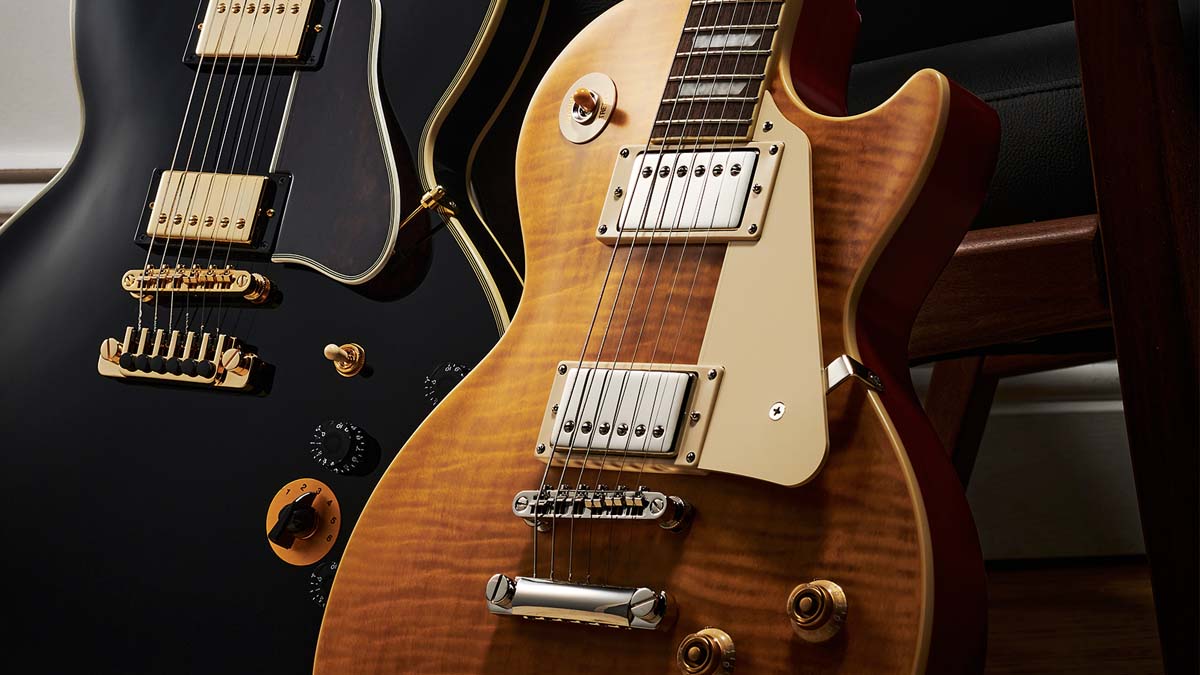
Now, the Gibson Les Paul Standard from the year 1959 is an electric guitar with a price tag that’s outsized for most budgets, but there’s no reason why, say, Bonamassa and the good people at Epiphone couldn’t put their heads together and spec up a replica that could retail for under a grand, right?
Exactly, and that is what we have got here. The Epiphone Lazarus is a rare breed of its own. It’s a first for Epiphone in that it is a Les Paul with a neck fashioned from a single piece of solid mahogany, and little details like that are all over this guitar’s design.
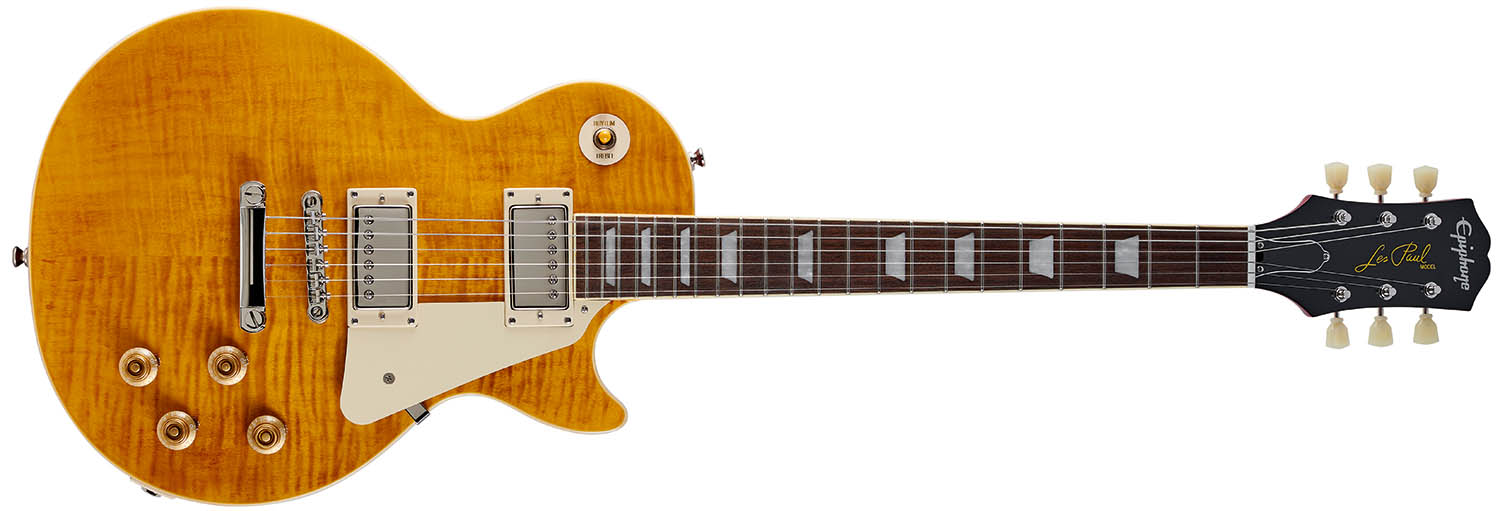
The neck join is glued to the two-piece mahogany body with a long neck tenon, just like the vintage LPs, and that mahogany body is topped with a maple cap with a AAAA figured maple veneer. This is not traditional but it is also why Epiphone can offer this guitar at this price point.
JoBo’s Lazarus is resplendent in an aged-gloss finish, giving it a slightly lived-in look and teasing out all of the detail in that maple veneer.
Again, it’s not traditional, we’ve got a poly finish rather than nitro but let’s not quibble. The vintage illusion is once more erected with the ‘60s Kalamazoo-style headstock, replete with Epiphone Deluxe Tulip Keystone tuners. The nickel-plated LockTone tune-o-matic bridge with LockDown stop bar should theoretically age nicely, too. This Les Paul sure looks the part.
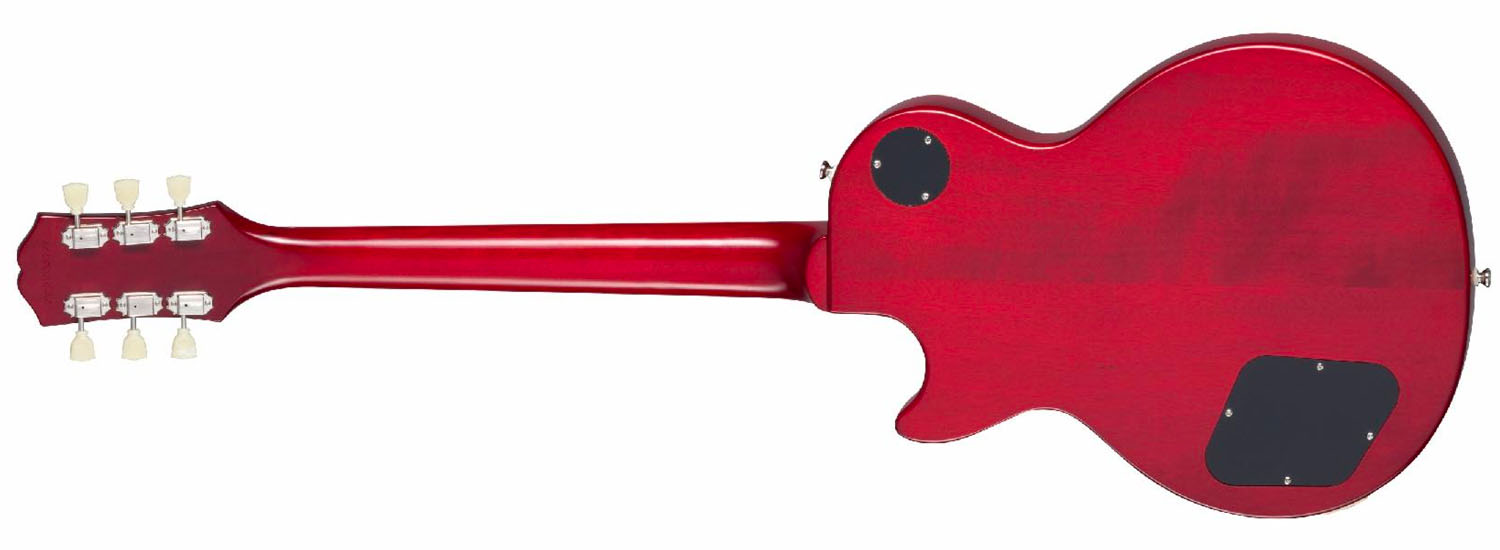
Making it sound the part we have a pair of Gibson USA BurstBuckers at the bridge and neck positions, with the usual shoulder-mounted pickup selector switch plus individual tone and volume pots for each pickup.
Those who take time out of the day to sniff corks might be interested to know that the pickup selector is crafted by Switchcraft, and under the hood, Epiphone has dipped into the ‘50s Gibson Les Paul Standard assembly manual to wire up a loom that’s similar to the old instruments, and populated by high-quality components. Here we’ve got CTS pots, Mallory capacitors, all that good stuff.
“We wanted to make a model that was accessible to everyone at a price point that you could buy it and go out and gig with it; it looks and feels like the original guitar,” said Bonamassa. “It’s gig-ready, and it’s a great tool to have whether you’re playing out live, in the studio, or just having fun at home annoying your neighbours.”
Quite so. Rounding out the spec there is a Graph Tech nut, cream pickguard, a very much sought-after brown vintage hardshell case that bears a “BONAMASSA Nerdville, CA” graphic and contains a COA.
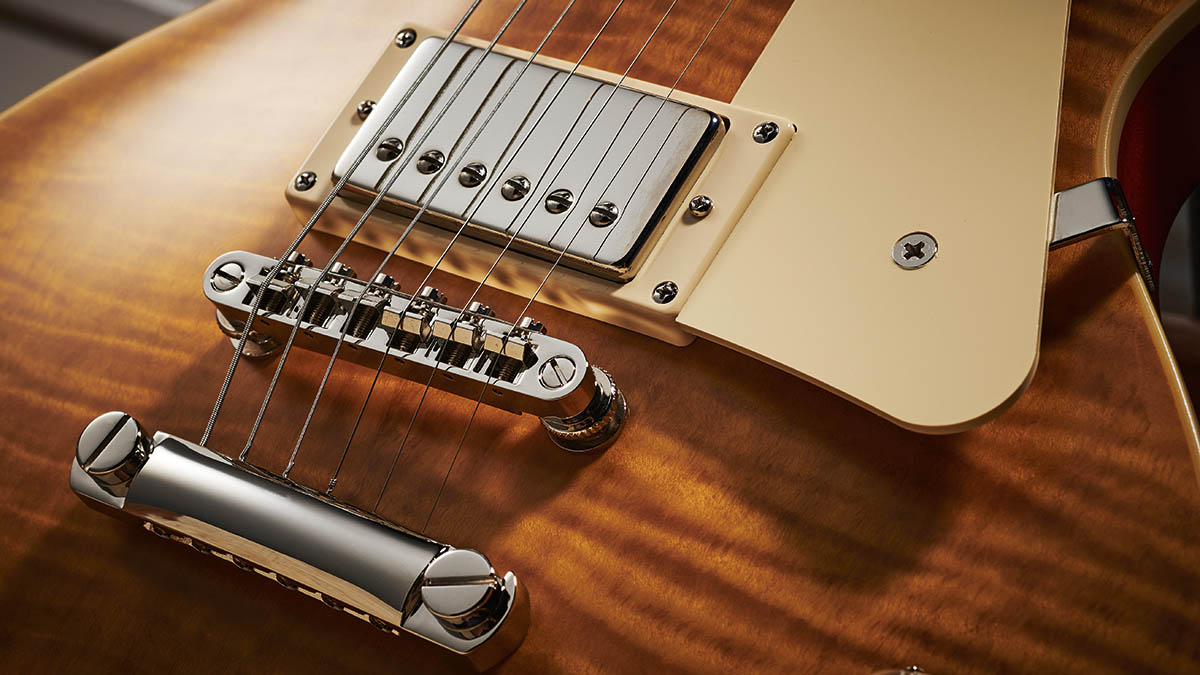
Epiphone Joe Bonamassa ‘Lazarus’ 1959 Les Paul Standard: Performance and verdict
Historically speaking, one of the biggest obstacles to playing an Epiphone Les Paul and really and truly enjoying it is that sense of illusion. We all demand our instruments inspire us but especially so when it bears Les Paul’s name on the headstock.
The question is whether that Epiphone Les Paul is going to command your full attention, or will that voice at the back of your head pipe up, wishing that there was a different name on the headstock…
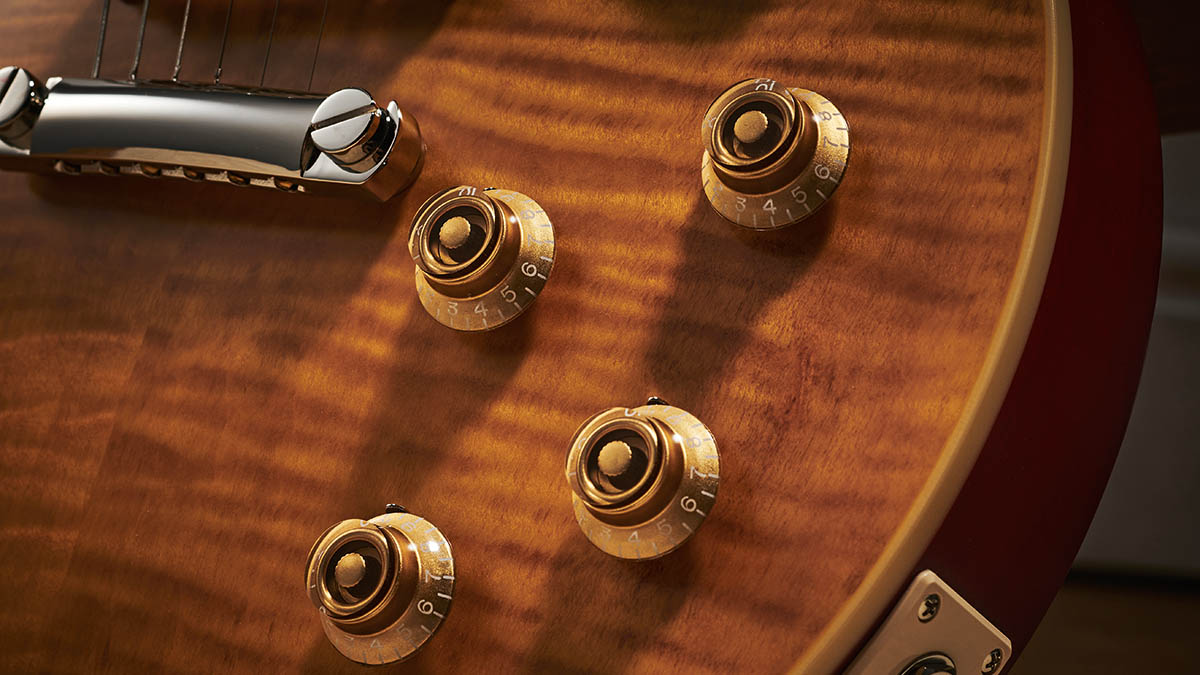
But that’s historically speaking. In recent years, the question when playing an Epiphone Les Paul is whether or not the Gibson Les Paul is worth the extra outlay. Perhaps not, not if your budget is tight, and a little leftover for pedals or a new guitar amp wouldn’t go amiss.
Again, what Epiphone has been doing is closing the distance between its Chinese-built instruments and the Gibsons that inspire them with imaginative spec and an eye for detail.
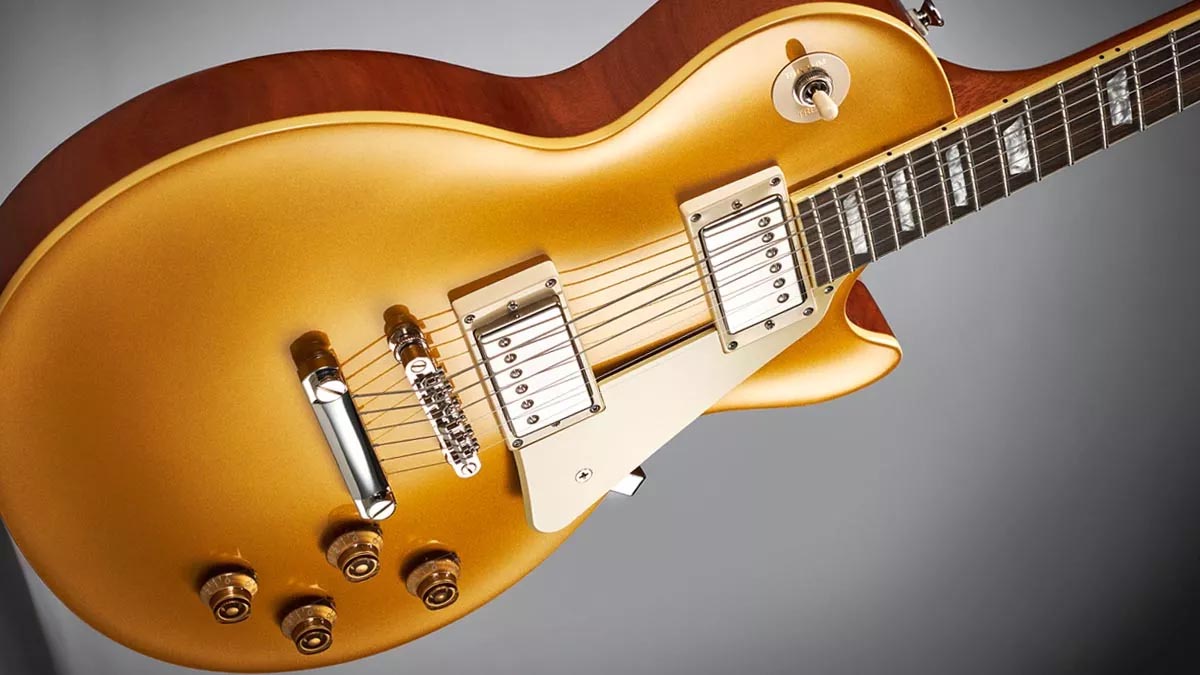
• Epiphone '50s Les Paul Standard
Epiphone gets the details right on this 50s Les Paul Standard. The tones sound authentically vintage. The feel and weight is right. And all this at a price that is impossible to argue with.
• Gibson Les Paul Tribute
If the Tribute’s main goal is to offer players a taste of Gibson’s greatest legacy and access to sounds at the heart of many a classic recording – at a fraction of the cost – then it’s undoubtedly a resounding success.
Whether it is with the ‘50s Les Paul Standard or with this here Lazarus, you really appreciate these details when you pick the guitar up and plug it in.
For a start, this really does look like an aspirational guitar. Weight is subjective but at 8lbs this is for many players the platonic ideal and will sit just the thing on a strap. The neck is not as clubby as you might expect. The ’59 rounded C profile is very welcoming, the 12” radius of the fingerboard and 24.75” scale, the generous hunk of mahogany; this feels just right.
Now, there have been compromises. The aforementioned figured-maple veneer on a maple cap is a concession to fiscal reality. Furthermore, that fingerboard, which looks inviting but maybe a little lighter than some of the Brazilian rosewood squirrelled away in precious quantities at Gibson HQ, is really Indian laurel. But these we can live with no problem.
Out of the box, the action is bang on, set up for those who like it buttery. And Lazarus is similarly forthcoming with the tones. At the bridge pickup, you’ve got that distinctly musical profile of treble-top and articulation underpinned by a width, warmth and something solid. For all its extra warmth, there is detail to that neck ‘bucker, too. But as with the best Les Pauls, some of the best tones are found when blending the pickups.

Bonamassa has long been an advocate for the Les Paul on the grounds that it offers an onboard pre-EQ solution, with abundant options for dialling in a tone before the signal reaches your pedalboard or amplifier.
That’s what you get here. For the blues-rock player, that’s fertile terrain, particularly when running through a tube amp and exploiting Lazarus’ superb dynamics. The sustain is very on-brand, too, further testimony to the powers of that long-neck tenon design. And, frankly, upscaling the pickups to USA BurstBuckers was a real power move. It is sure to place Lazarus in high demand. Long live Lazarus.
MusicRadar verdict: A worthy production line replica of a storied ’59 Les Paul Standard, Lazarus is exactly what you would expect from Epiphone and a vintage guitar connoisseur; it’s all vibe and then some.
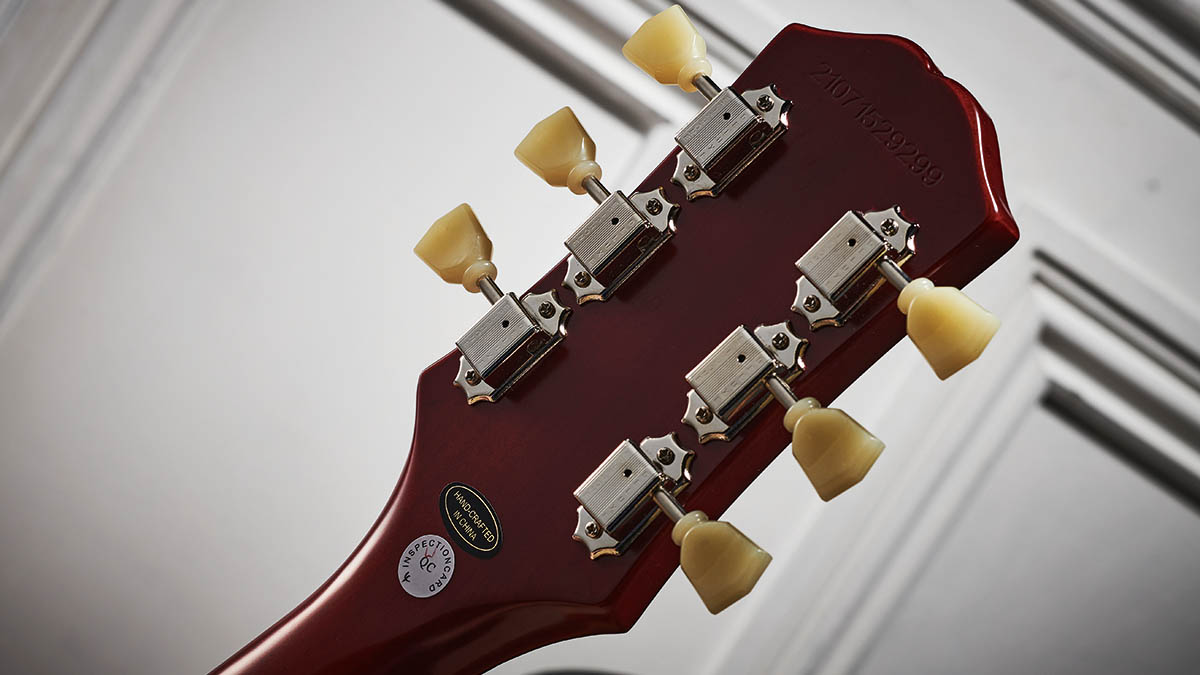
Epiphone Joe Bonamassa ‘Lazarus’ 1959 Les Paul Standard: The web says
“Plugging in the ‘Lazarus’ to a Matchless Lighting reveals a strident set of tones that would appease the most ardent Les Paul lover. The neck’s Burstbucker 2 is warm but clear when set clean but becomes fat and juicy when cranked.
“Indeed, across the spectrum of pickups and settings it simply sounds like a fine Les Paul. It’s easy to forget it comes in at under a grand. Favourite tone? Both pickups on, bridge up full, neck knocked back to 7 – it sounds like the biggest bridge humbucker ever.”
Guitarist
Epiphone Joe Bonamassa ‘Lazarus’ 1959 Les Paul Standard: Hands-on demos
Joe Bonamassa
Guitarist
The Trogly's Guitar Show
PMTVUK
Andertons
Epiphone Joe Bonamassa ‘Lazarus’ 1959 Les Paul Standard: Specifications
- ORIGIN: China
- TYPE: Single-cutaway, solidbody electric
- BODY: Solid mahogany body and neck, maple cap with AAAA veneer
- NECK: Mahogany, 59 ‘smaller medium C’ profile, glued-in
- SCALE LENGTH: 628mm (24.75”)
- NUT/WIDTH: Graph Tech Tusq/43mm
- FINGERBOARD: Bound Indian laurel, pearloid trapezoid inlays, 305mm (12”) radius
- FRETS: 22, medium jumbo
- HARDWARE: Epiphone LockTone tune-o-matic bridge and stud tailpiece, Kluson-style vintage tuners – nickel‑plated
- STRING SPACING, BRIDGE: 52mm
- ELECTRICS: Gibson Burstbucker 2 (neck) and Burstbucker 3 (bridge), 3-way toggle pickup selector, 2x volumes, 2x tones (CTS pots/Mallory capacitors)
- WEIGHT (kg/lb): 3.69/8.1
- FINISH: Lazarus aged gloss only
- CONTACT: Epiphone
MusicRadar is the number one website for music-makers of all kinds, be they guitarists, drummers, keyboard players, DJs or producers...
- GEAR: We help musicians find the best gear with top-ranking gear round-ups and high-quality, authoritative reviews by a wide team of highly experienced experts.
- TIPS: We also provide tuition, from bite-sized tips to advanced work-outs and guidance from recognised musicians and stars.
- STARS: We talk to musicians and stars about their creative processes, and the nuts and bolts of their gear and technique. We give fans an insight into the craft of music-making that no other music website can.
“Excels at unique modulated timbres, atonal drones and microtonal sequences that reinvent themselves each time you dare to touch the synth”: Soma Laboratories Lyra-4 review
“I used everything I knew about music”: How Green Day exceeded expectations with their most ambitious song
YouTube just added AI tools that makes musicians, library music and video editors redundant











